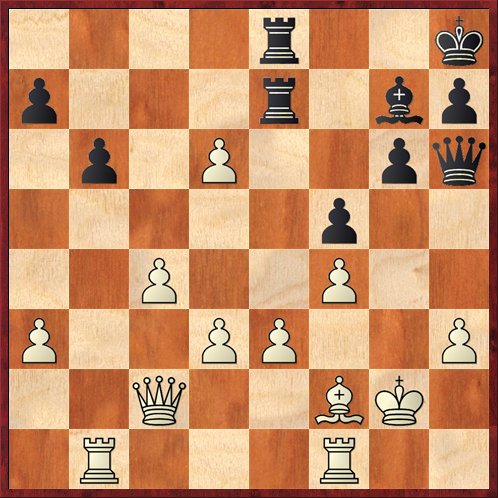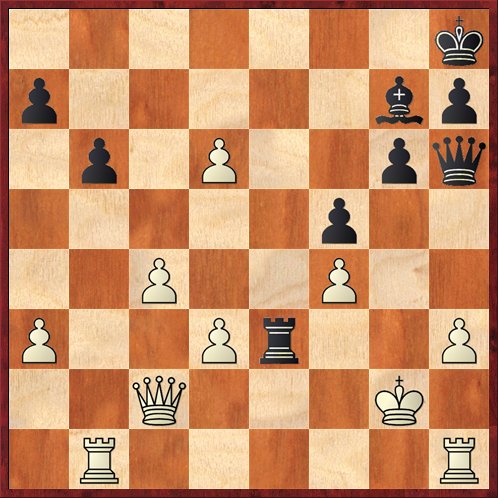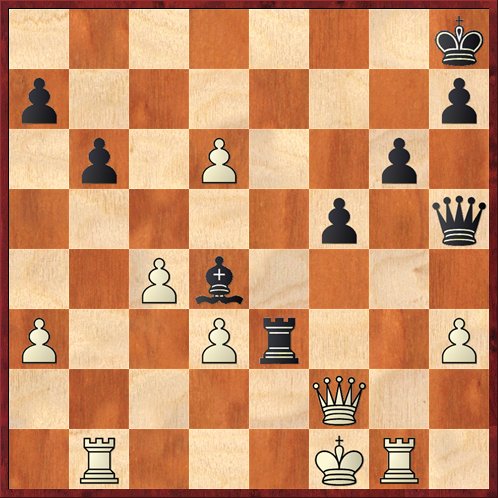Last night Cailen Melville had a chess gathering at his house for the first time, which I went to along with Gjon Feinstein, Thadeus Frei, and Yosi Cohen. His parents are away, so he had the whole house to himself, and it was quite pleasant, with lots of space and a table big enough for two boards.
The only slight issue was that Cailen started microwaving a snack, and the power went out! At first we thought that he had blown a fuse, but then we noticed that all the lights across the street were out as well. It seemed as if Cailen’s microwave had cut off power to all of Santa Cruz (all of it that we could see, anyway). The only light we could see was the light inside Gjon’s car, which Gjon had not turned off! Thadeus said, “This is how it starts. Gjon goes outside to turn his lights out. Then he doesn’t come back. Then somebody goes out to investigate…”
Someone has been watching too many horror movies.
Thadeus has a pretty sly sense of humor, I noticed. Later on (after the power came on — it was only out for about ten minutes), I was getting ready to go home. I complimented Cailen on what a good place it was for a chess meet-up, and started itemizing all the good things about it — lots of space, friendly dogs, … Then Thadeus added, “Good lighting, …”
Here’s the exciting ending to a blitz (5-minute) game that I played against Thadeus. I’m about 95 percent sure that the position is correct. It’s my move (Black to play).

Black to play.
FEN: 4r2k/p3r1bp/1p1P2pq/5p2/2P2P2/P2PP2P/2Q2BK1/1R3R2 b – – 0 1
Over the last couple moves I have mortgaged the farm (or at least two pawns) in order to get a kingside attack. It’s pretty clear that there is only one way forward, and that is to sacrifice some more.
1. … Rxe3! 2. Bxe3 …
According to Rybka, 2. Rh1 immediately is a little bit better. But in speed chess, you take the material first and ask questions later.
2. … Rxe3 3. Rh1? …
Now this is a mistake. I had a suspicion that 3. Rf3 was White’s best move, and that suspicion is confirmed by the computer. It’s obvious that after 3. … Rxf3 4. Kxf3 Qxh3+ Black has at least a draw, but in fact I can play for a win with 5. Ke2 Qg2+ 6. Kd1 (all forced, otherwise White loses his queen) Qf1+ 7. Kd2 Qxf4+ 8. Ke2 Qh2+ 9. Kd1 Qxd6. It’s kind of cool how all of those White pawns fall like ripe apples.
Now back to the game, after 3. Rh1.

Position after 3. Rh1. Black to move.
FEN: 7k/p5bp/1p1P2pq/5p2/2P2P2/P2Pr2P/2Q3K1/1R5R b – – 0 3
Here I’m a little bit disappointed in myself. Of course, I’m down to only a few seconds — I’m not sure how many exactly, but maybe 10 or 20. With so little time, I (like Thadeus) followed the rule of “Grab material first, ask questions later.” But I had something better. Do you see Black’s winning move?
The move I played was 3. … Qxf4, which is pretty good but it lets White’s queen get into the defense after 4. Qf2 Qg5+ 5. Kf1 Bd4 (5. … Rxd3 was better) 6. Rg1! Qh5. Now, according to Rybka, Thadeus missed a chance to save himself. Do you see how?

Position after 5. ... Qh5. White to move.
FEN: 7k/p6p/1p1P2p1/5p1q/2Pb4/P2Pr2P/5Q2/1R3KR1 w – – 0 6
The move that Thadeus played was 7. Re1??, which simply missed Black’s threat of 7. … Rf3. He continued 8. Re8+ Kg7 9. Re7+ Kh6 and then I’m not exactly sure what happened. It’s possible that he played 10. Qxf3 Qxf3+ 11. Ke1 and that I missed 11. … Bc3 mate! and played 11. … Qf2+ instead. Anyway, his flag fell a couple of moves later. I had 3 seconds left when he ran out of time, so it was pretty exciting.
Typical speed chess! You get an interesting position, there isn’t enough time to analyze it properly, both sides make a hash of it, and somebody’s flag falls.
But then there’s always the post-mortem to see what should have happened… What should have happened in the second diagram was 3. … Qh5!, when there is no defense to the two threats of … Qf3+ and … Re2+. White has to give up his queen. As you can see, I sort of spotted this idea a couple moves later, but by then it was not as effective.
In the third diagram, White could have held the position with 6. Rg3!, defending both the h3 pawn and the f3 square. After 6. … Rxg3 7. Qxg3 (but not 7. Qxd4+? Kg1 8. Qd5+ Kf8 and White runs out of checks) White has all of the weak points covered, and the d6 pawn is going to become a threat. Rybka prefers 6. … Rxd3, which is tricky but would probably lead to a draw after 7. Rxd3 Bxf2 8. Kxf2 Qh4+. (Rybka says White is actually better after 7. Qe1!? but it’s extremely unclear and no human, especially with 5 seconds left on his clock, would ever play such a move.)
In addition to the speed chess, Cailen showed us some games from last weekend’s Golden State Open, which I did not play in but he did. He had a really good result, with a score of 5½-1½, which tied him for third place in the under-1900 section. He gained about 40 rating points to his highest rating ever, 1850-something.
Looking at Cailen’s games, it struck me that chess is easy when your opponents make mistakes. That was kind of the pattern in all of them — Cailen would pose his opponents some problems and they would just completely miss the solutions. They would make terrible blunders in positions that still should have been okay.
At first I thought this might be because his opponents were all also rated under 1900, and sub-1900 players just don’t hold up well under pressure. But I think that misses the point. At any rating level, whether it’s 1500 or 1900 or 2300, if you’re the one who is posing the questions it’s more likely that your opponent will make a mistake than you.
I might show a couple examples from his tournament in my next post, but I think this is enough for now. I’m having some problems with Word Press, so I had to use an awkward work-around to get the figures online. Anyway, until next time, turn the lights out!



{ 3 comments… read them below or add one }
I totally agree with your point at the end. I am in pretty much the same boat is Cailen (1900ish, recently 1800ish), and I think that one of the main things I’ve been doing right recently is to play solid moves, keep all my pieces happy, and wait for a mistake, rather than always pushing to try to make the most of every imbalance I see, which often leads to me stretching my pieces too thin and making the proverbial last mistake. I even beat an IM (though it was just a G/60) with the “just make good moves and take advantage if he blunders” strategy.
It kind of feels like Carlsen has been doing this at the 2800 level lately!
Dan, I was going to make the same observation about Carlsen!
I have to agree that people at any level make mistakes when pressed, and to some extent the nature of the game is like that. But personally, very rarely have I been able to complement anyone for playing well. It’s either a bunch of cheapos (read post above) or it’s a gross oversight by one player or the other. Plus, the glut of tawdry lines with little insight.
I think that if we have an attractive looking attack anywhere, we must not complement the attacker (well, unless if it’s a game like Tal-Larsen, Larsen-Spassky, Spassky-Bronstein, etc.) but to examine where the other side has gone wrong (because, most often, we can). I guess it’s the level of cheapness that decreases as we get better, we might end up calling it art.
{ 1 trackback }